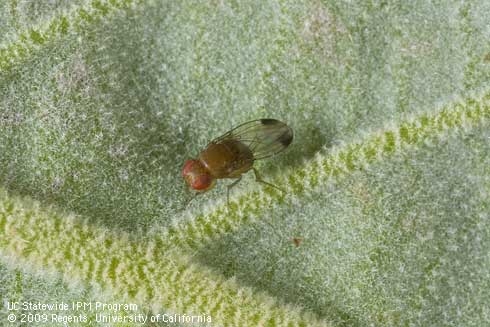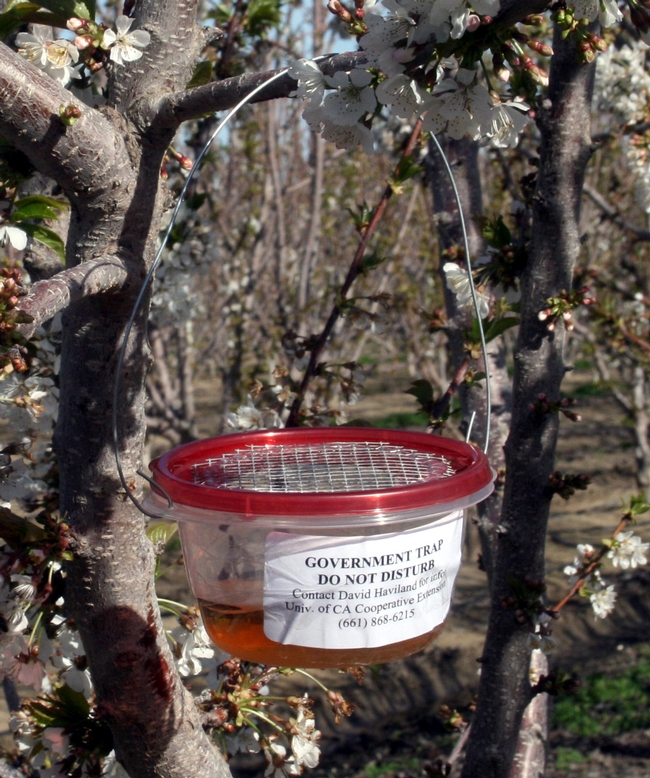Be on the lookout for spotted wing drosophila

Unlike other fruit flies that infest rotted fruit, SWD attacks undamaged fruit. As cherry fruit begins to develop and starts to change color from light green to straw, SWD lays its eggs just under the skin of fruit, creating a small scar or a“sting.” One to three larvae may develop inside each cherry, feeding on the fruit and causing it to become brown and soft. Many times SWD flies are not noticed until fruit is mature, and by that time management is not very effective.

Spotted wing drosophila is still a relatively new pest, and management information continues to change. David Haviland, UC Cooperative Extension advisor in Kern County, and other researchers have been working to provide what help they can. Haviland has designed a bucket trap called the “Haviland trap” and is working with others to field-test experimental lures for SWD. He's also studying a possible biological control agent. Research has led to new grower guidelines so that early season cherries can be produced and sold internationally. Check out the 2014 Recommendations for Sweet Cherry (PDF).
For management in backyard cherries or other urban areas, see the SWD Pest Note.
For more information about UC IPM's recent work, see the 2013 Annual Report.
